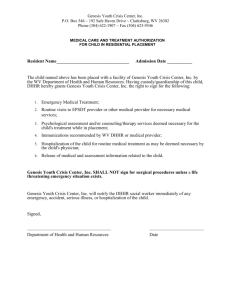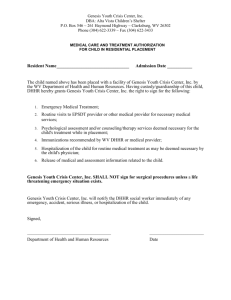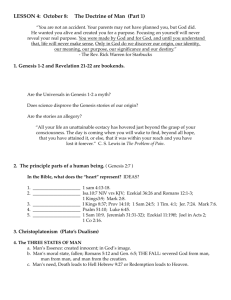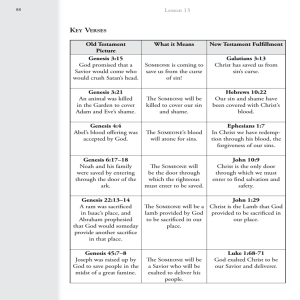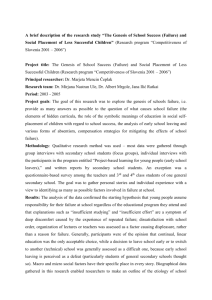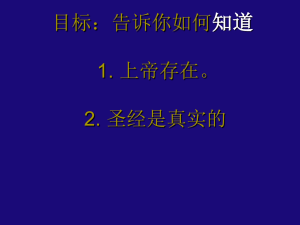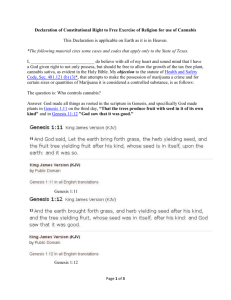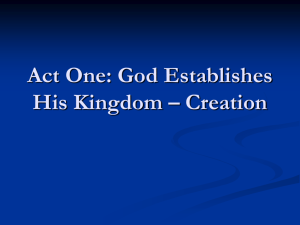b. The new beginning with Noah (Gen. 10-11).
advertisement
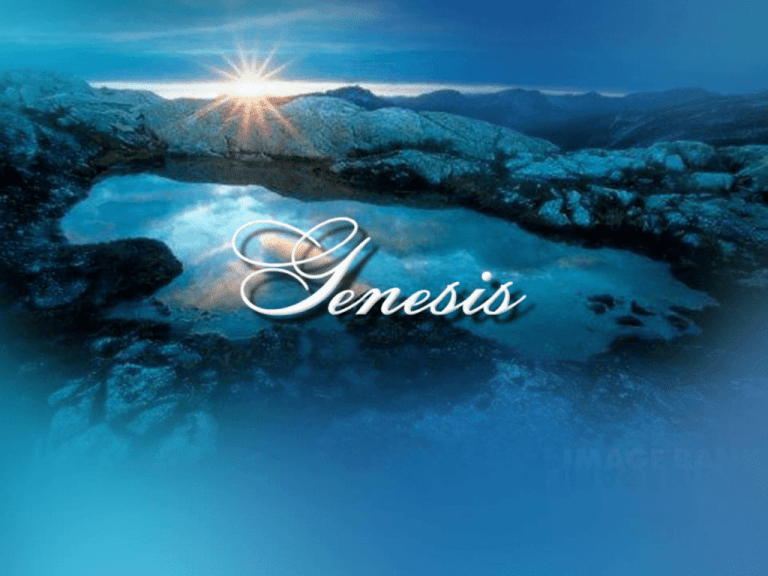
Introduction to Genesis The Book of Beginnings I. What is the significance of the name “Genesis?” A. The word “Genesis” means “beginning, origin or birth”. B. Genesis is the Book of Beginnings. 1. The Book of Genesis marks the beginning of the universe. 2. The Book of Genesis details three new beginnings. a. The original creation (Gen. 1-9). b. The new beginning with Noah (Gen. 10-11). c. The new beginning with Abram (Gen. 12-50). 3. Key words in the Book of Genesis include: Begat (67), Generation (21) and some form of begin or beginning (12). C. Genesis is the seed plot of the Bible. Themes that begin in Genesis are developed in the rest of the Bible only to end up in the Book of Revelation. Note the following: Contrasts between Genesis and Revelation Genesis Revelation First Paradise Closed (3:23) New Paradise Opened (21:25) Dispossessed thru Sin (3:24) Repossessed thru Grace (21:24) Curse Imposed (3:17) Cursed Lifted (22:3) Tree of Life Lost (3:24) Tree of Life Regained (22:14) Beginning of Sorrow and Death (3:16) End of Sorrow and Death (21:4) A Garden where defilement entered (3:6-7) A city where nothing defiled can enter (21:27) Dominion Forfeited in Adam (3:19) Dominion Restored in Christ (22:5) Evil Triumphs in Serpent (3:13) Lamb Triumphs over Serpent (20:10) II. What significant questions does the Book of Genesis answer? The Book of Genesis answers many of the questions that have plagued philosophers throughout the ages. • What is the source of the universe? • Is there a God in heaven? • Where did the seven day week come from? • Where did men and woman come from? • What is the purpose of man’s existence? • What is the origin of marriage in humans? • What is the difference between animals and man? • How did sin enter the human race? • What is the source of all of the various languages in the world today? • Is there a real devil and how does he work? • What is the origin of the Hebrew race? • How did the children of Israel get into Egypt? III. What is a simple outline of the Book of Genesis? A. Four Predominant Events (Genesis 1-11) 1. The Creation (Genesis 1-2) 2. The Fall (Genesis 3-5) 3. The Flood (Genesis 6-9) 4. The Babel Crisis (Genesis 10-11) B. Four Predominant Persons (Genesis 12-50) 1. Abraham (Genesis 12-25) 2. Isaac (Genesis 25-26) 3. Jacob (Genesis 27-36) 4. Joseph (Genesis 37-50) IV. Who wrote the Book of Genesis? There is very little debate among conservative theologians that Moses was the author of this book. All Jewish literature attributes the writing to Moses. The New Testament and the early church fathers confirm this same conclusion (Luke 24:44). V. What is the date of the writing? Most scholars would place the writing of the Book of Genesis around 1400 B.C. most likely during the wilderness wanderings when God instructed Moses to write things down in book form (Ex. 17:14; 24:4; 34:27). Moses covers at least 2400 years of human history from the sin of Adam to the death of Joseph. VI. How could Moses write this book when he was not alive at the time of the events recorded in this book? There are two possible sources from which Moses got his understanding of the events described in the Book of Genesis. A. From oral tradition. B. From God Himself (Acts 7:37-39; Ex. 33:11). VII. What is the key verse in the book of Genesis? The key verse in the Book of Genesis is Genesis 3:15. “And I will put enmity between you and the woman, and between your seed and her Seed; He shall bruise your head, and you shall bruise His heel.” VIII. What covenants with man were established by God in the Book of Genesis? Four of the nine great covenants that God has established with man were set forth in the Book of Genesis. A. The Edenic Covenant (Gen. 1). B. The Adamic Covenant (Gen 3). C. The Noahic Covenant (Gen. 9). D. The Abrahamic Covenant (Gen. 12-15). IX. How is Christ seen in the Book of Genesis? Christ is the unifying theme of the whole Bible (Luke 24:27, 44; John 5:39; Heb. 10:7). In Genesis Christ is seen in the following: A. The Tree Of Life (Gen. 2:9; John 6:54). B. Adam (Rom. 5:14; I Cor. 15:45; II Cor. 5:17). C. The Seed of the Woman (Mt. 1:2223; Lk. 1:35). D. The Coats of Skin (Gen. 3:21; Rom. 5:12-21). E. Isaac, the only begotten son of the Old Testament (Heb. 11:17-19; John 3:16; I John 4:9). F. The Lamb in the Thicket (Gen. 22:13). G. The Curse Bearer (Gen. 3:14-19; Gal. 3:13-14). The Curse Christ’s Relationship to the Curse Ground Cursed Christ became a curse (Gal. 3:13). Eat in Sorrow Christ was a man of sorrows (Is. 53:3). Thorns & Thistles Christ was crowned with thorns (Jn. 18:8). Sweat Christ sweat drops of blood (Lk. 22:44). Return to Dust Christ brought to dust of death (Ps. 22:15). Flaming Sword Christ was pierced with a sword (Zech. 13:7). Man to Die Christ tasted death for every man (Jn. 18:14). Cut off from Tree of Life Christ is the tree of Life (Jn. 6:47-58; 14:6). H. The Ark of Salvation (Gen. 6-9). I. Jacob’s Ladder (Gen. 28:12; John 1:51). J. Joseph (Gen. 37-50). X. Did all of the events that are recorded in Genesis actually happen? YES! • • • • Adam and Eve (Mt. 19:4) Abel’s Murder (Mt. 23:35) Noah and the Flood (Luke 17:27) Lot and the Destruction of Sodom (Luke 17:29) • Abraham, Isaac and Jacob (Luke 13:28) XI. What does the Genesis family tree look like? Note the following chart:
